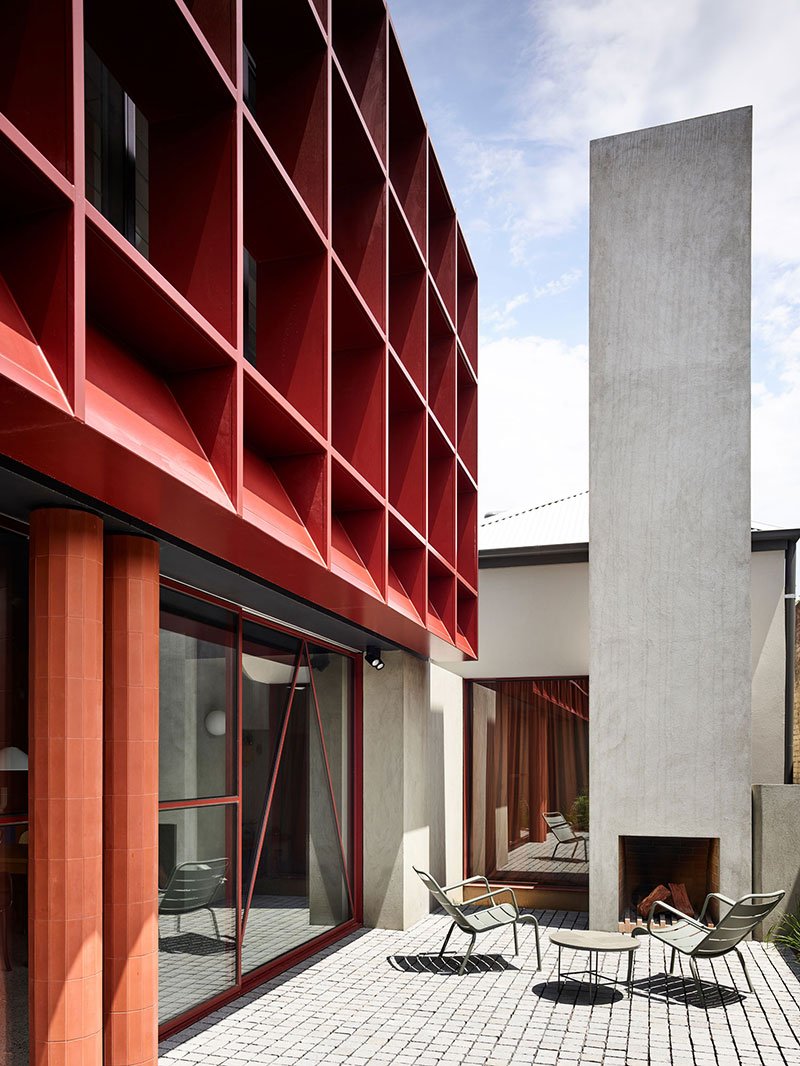#10923. Red Modular Facade: Contrast of Forms and Materials in Contemporary Architecture

This is an outstanding example of modern architecture where the contrast of materials and forms creates a dynamic dialogue between different elements of the building. The dominant feature of the facade is the bright red grid structure of the upper tier, representing a modular grid with deep niches. This technique creates an interesting play of light and shadow throughout the day, adding expressiveness and depth to the object.
The lower level of the facade features warm terracotta columns and large glass surfaces in red frames, which provide a visual connection between the interior and exterior spaces. The monolithic concrete wall on the right creates a dramatic contrast with the warm tones of the main facade, while also serving as a functional element—possibly a chimney.
The light stone-paved terrace with minimalist outdoor furniture creates a cozy space for relaxation. The vertical and horizontal lines in the building's architecture form a clear rhythm, emphasizing the modern character of the structure.
For a private home, a similar approach can be adapted by using contrasting materials in the facade finish—for example, combining wood and concrete or metal and glass. Rhythmic elements in the form of a grid or perforated panels can become an accent element that gives individuality to the structure. Playing with volumes and levels can also add architectural expressiveness even to a small building.